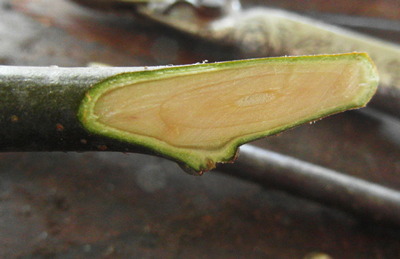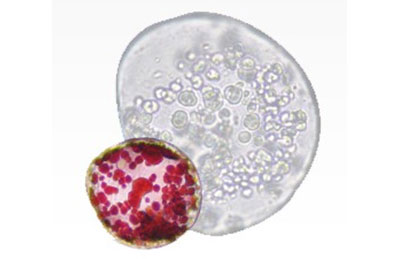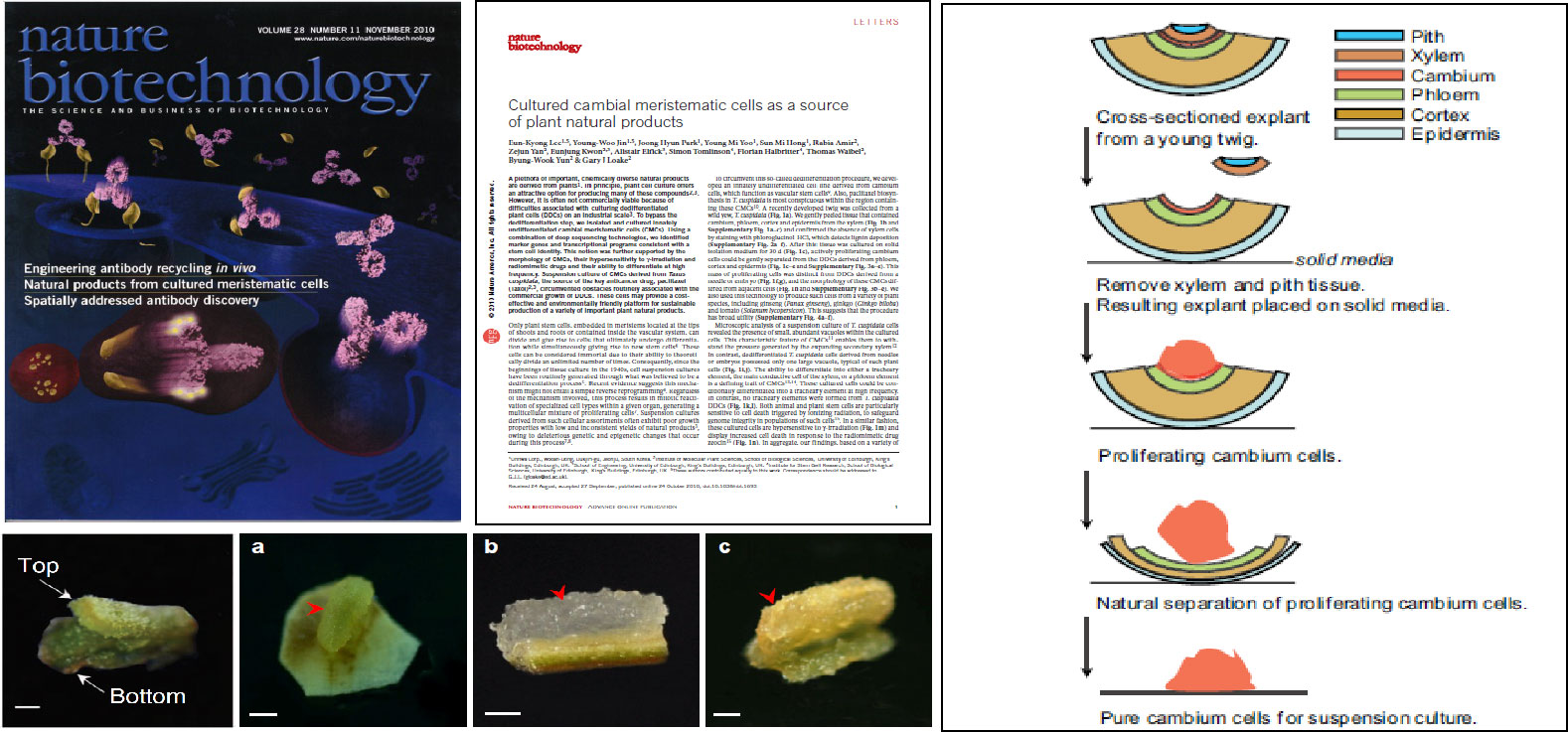
As we known, even plants have lived for a thousand years, they still can naturally grow new tissues every year, such as flowers, leaves, fruits, seeds, roots, bark and so on. This is because in the apical meristem of tree bud and root tip, and the lateral meristem of cambium, there are innate and original undifferentiated cells, called Cambial Meristematic Cells (CMCs), which maintain themselves while providing a steady supply of precursor cells to form differentiated tissues and organs in plants.
We've also seen that trees on the side of the road, when they're damaged, are able to immediately produce a cell mass that protects the wound and sometimes grow new branches. This is because when mature cells at the wound sites are physically injured or artificially stimulated, they will be induced and undergo dedifferentiation to give rise to not sufficiently differentiated cells, called Callus (A.K.A. dedifferentiation Cells, DDCs), which temporarily gains the ability to proliferate and/or regenerate an embryo, and to form new branches and leaves at the wound.
Both CMCs and DDCs function as plant stem cells and form new plant tissues and organs. That is why both of them are named ‘ plant stem cells’ in business fields. However, only CMC is scientifically recognized as a true plant stem cell.

This is the DEFINITION of 'plant stem cells' on the official website of Nature.
“PLANT STEM CELLS are innately undifferentiated cells located in the meristems of plant. They serve as the origin of plant vitality, as they maintain themselves while providing a steady supply of precursor cells to form differentiated tissues and organs in the plant.”
This definition tells us that only CMCs from the plant meristem is the REAL plant stem cells, not DDCs from the wound tissue. Hence, CMC has the following characteristics:
• Located in the plant meristems
• Innately undifferentiated
• Stable cell division and differentiation ability

Nature, one of the earliest and most authoritative scientific journal in the world. Only cutting-edge findings of many fields of research in which important new advances and original research could be published in Nature, such as Dolly the cloned sheep, induced pluripotent stem cells (iPSCs) and AlphaGo the AI Go program. The papers that have been published in this journal are internationally acclaimed for maintaining high research standards. The impact factor of 2017 is 40.137.
First Successful Isolation of Undifferentiated Plant Stem Cells in the World
Plant stem cells contain all the genetic information of plant development and growth, and have amazing abilities in cell division and differentiation, which enables plants to continue to grow for as much as hundreds of years, and they are considered to be the root of plant vitality. Many botanists have made hundreds or thousands of attempts to isolate these undifferentiated plant stem cells alive since 160 years ago, but all of them have failed: either the cells were dead, or had mutated away from being undifferentiated stem cells.
In 2004, the core R&D team of PIPSCI, led by Mr. Young Woo Jin, successfully isolated these undifferentiated plant stem cells alive for the first time, and later, published their paper with title of “Cultured cambial meristematic cells as a source of plant natural products” as cover thesis on Nature Biotechnology, November 2010.
